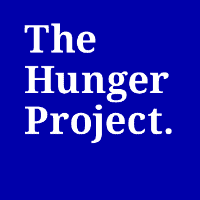The Year for Implementation. Welcome to the Post-2015 Era – a dramatically new policy environment for the work of ending hunger and poverty.
Back in the year 2000, when the world launched the Millennium Development Goals (MDGs), it took nearly five years before there was serious implementation. Today the world moves faster, and is intent on quickly implementing the new Post-2015 Sustainable Development Goals (SDGs).
Here are what I see as the highest-leverage opportunities we should seize, based on the key themes of the SDGs.
- Youth. Because drops in infant mortality precede drops in fertility, developing countries have a demographic “youth bulge.” When youth are employed, this can be a huge economic dividend. When they are not employed, it can be a time bomb, witness the Arab Spring. The faster we empower youth as effective economic and political actors, the faster the world makes progress.
- New Partnerships and Alliances. A central recognition of the 2030 agenda is that success depends on working better together: national and local governments, civil society and the private sector, and South-South cooperation. No single sector has the resources to meet the challenges. This is particularly true for creating an inclusive economy where not just the wealthiest benefit from economic growth.
- High-hanging fruit. The MDGs, designed to get halfway to ending hunger, incentivised reaching the “low-hanging fruit,” the easiest to reach. To fulfill the vision of leaving nobody behind requires shifting priorities to focus on the hardest to reach, often in fragile and conflict-affected states. Fortunately, recent studies reveal the surprising news that such programs are just as effective.
- World Humanitarian Summit. Reaching the high-hanging fruit means bridging the gap between humanitarian response and development. The first-ever summit will be held 23-24 May at the crossroads of the world’s greatest current humanitarian response, in Istanbul, Turkey.
- Sustainable Food Systems. The harshest impacts of climate change are on small-scale farmers. Agriculture itself can either be a major cause of climate change, or a solution – we need to find ways to empower every farmer not only to adapt to climate change but to benefit from investments to mitigate climate change.
- Rio Nutrition for Growth Summit. In 2012, the UK held a nutrition summit during the summer Olympics, and Brazil is following suit in August 2016. Nutrition has made enormous progress in those four years, yet implementation still lags behind.
- Habitat III – Community empowerment at scale. Our approach to ending hunger is gender-focused community-led development, and the challenge is to bring that to national scale, as has been so successful in Brazil, the Philippines and Indonesia. The most relevant world summit on this subject will be Habitat III in Quito from 17-20 October.
- IT For All. If success depends on empowering people and on continuous learning, than let’s ensure every person, particularly small-scale farmers, get the maximum benefit from the internet as quickly as possible. Mobile banking, mobile data collection, mobile methods for government transparency and accountability can revolutionize the quality of life for people currently marginalized.
- Integrated Solutions. The SDGs emphasize that our problems are interlinked and demand integrated solutions. Health, for example, depends not only on access to medical care, but also on clean water and sanitation, education about health, social norms and prevention of child marriage. Yet bureaucracies tend to prefer programs in narrow silos. We are members of LOCUS, a group working for stronger policies and practices in integrated development.
- Domestic Resource Mobilization. A huge paradigm shift in the SDGs is the recognition that countries have far more access to their own resources than they do to aid – if they can get the tax system working. Treaties to eliminate tax havens are a key step.
